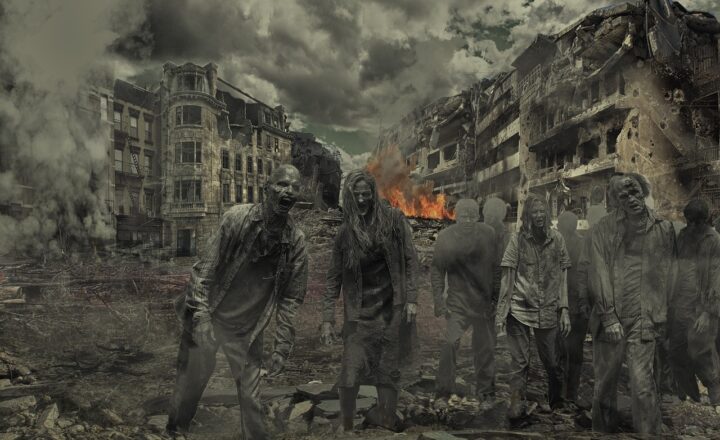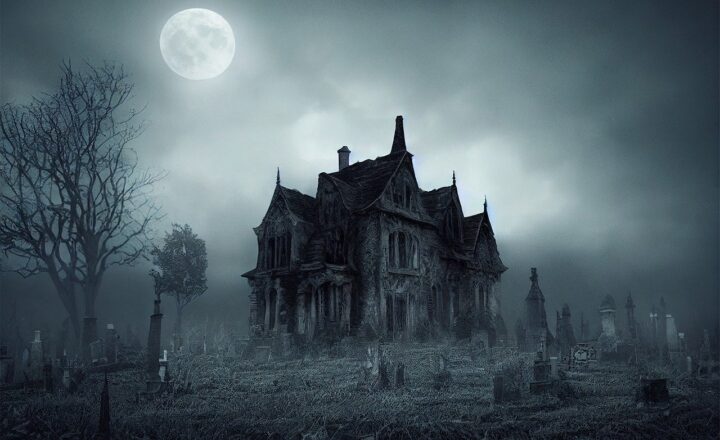
Horror films have long served as a mirror to society, revealing our deepest fears and insecurities. Throughout cinematic history, there have been pivotal moments when films pushed boundaries and redefined what horror could achieve. From psychological terror to supernatural frights, these films not only terrified audiences but also transformed the genre itself. Here, we delve into ten films that redefined horror, altering the landscape of this often misunderstood craft.
1. Psycho (1960)
Alfred Hitchcock’s “Psycho” is widely regarded as a landmark of psychological horror. The film broke conventions with its shocking plot twists, especially the infamous shower scene, which has since become one of the most referenced moments in film history. Hitchcock expertly played with audience expectations, departing from standard horror tropes by focusing on a deeply flawed human mind rather than a nationalistic monster.
The chilling portrayal of Norman Bates, combined with Bernard Herrmann’s haunting musical score, created an atmosphere of suffocating dread that lingered long after the credits rolled. “Psycho” not only set the bar for psychological thrillers but also influenced countless filmmakers and shaped the direction of modern horror.
2. Night of the Living Dead (1968)
George A. Romero’s “Night of the Living Dead” redefined horror by introducing the concept of the modern zombie. With its gritty realism and social commentary, the film addressed issues of race, class, and human nature amid chaos. Romero’s zombies, flesh-eating creatures driven by an insatiable hunger, became a metaphor for societal collapse and consumerism.
The film’s impact on the genre is immense, spawning a sub-genre that continues to thrive today. Romero’s approach to storytelling, combined with special effects that pushed the boundaries at the time, ignited a revolution. The zombie apocalypse became a staple in popular culture, thanks in large part to Romero’s groundbreaking vision.
3. The Exorcist (1973)
Regarded as one of the scariest films of all time, William Friedkin’s “The Exorcist” brought religious horror into mainstream cinema with an unsettling blend of psychological and supernatural elements. The story of a young girl possessed by a demonic entity challenged viewers’ perceptions of good and evil, tapping into societal fears surrounding spirituality and faith.
With its intense performances, shocking scenes, and pioneering special effects, “The Exorcist” became a cultural phenomenon, leading to significant discussions about morality and spirituality in film. Its ability to evoke genuine fear, coupled with a deep-rooted narrative, redefined horror as a compelling genre that could explore complex themes.
4. Halloween (1978)
John Carpenter’s “Halloween” is credited with establishing many of the conventions of the slasher film. The character of Michael Myers, an embodiment of pure evil, set the template for future horror villains. The film popularized the use of a masked killer stalking unsuspecting victims, creating an unmistakable sense of dread and tension.
Carpenter’s innovative use of suspense, coupled with an eerie synth score, transformed horror filmmaking. “Halloween” became a box office success, igniting a franchise and inspiring a wave of slasher films, cementing its status as a classic and influencing generations of filmmakers.
5. The Texas Chain Saw Massacre (1974)
Tobe Hooper’s “The Texas Chain Saw Massacre” took horror to grotesque and visceral extremes. The film’s raw depiction of violence and gritty cinematography blurred the lines between fiction and reality, inciting controversy and shock among audiences. Leatherface, the film’s monstrous antagonist, became an icon of horror, representing the dark underbelly of American culture.
Its documentary-style approach and relentless pacing conjured feelings of fear and helplessness that had yet to be seen in cinema. This film reframed horror by demonstrating that psychological fear could be rooted in the semblance of reality, paving the way for future filmmakers to explore similar themes.
6. The Shining (1980)
Stanley Kubrick’s adaptation of Stephen King’s “The Shining” is an extraordinary blend of psychological horror and supernatural suspense. The film amplifies themes of madness, isolation, and familial fracture through its chilling atmosphere. With Jack Nicholson’s unforgettable performance as Jack Torrance, the film explores the depths of human psyche and the horror that can arise from within oneself.
Kubrick’s use of visual storytelling, hypnotic soundtrack, and masterful pacing redefine horror, inviting viewers to experience tension over explicit fright. The film’s ambiguity and intricate symbolism have led to endless interpretations, solidifying its place in horror film history.
7. Scream (1996)
Wes Craven’s “Scream” revived interest in the slasher genre while simultaneously poking fun at its own conventions. By breaking the fourth wall and incorporating self-referential humor, “Scream” cleverly critiques horror tropes while providing thrilling entertainment. Its memorable opening sequence and the introduction of the Ghostface killer reignited the genre and spawned a successful franchise.
The film emphasized the importance of character depth and understanding of the genre while simultaneously delivering suspense, gore, and genuine thrills. “Scream” marked a new era where horror could be both scary and self-aware, paving the way for contemporaneous horror films that embraced similar styles.
8. Get Out (2017)
Jordan Peele’s “Get Out” reinvented horror by blending social commentary with terrifying suspense. The film tackles themes of racism and cultural appropriation, revealing the sinister undercurrents present in even the most innocuous of settings. Peele employs a taut narrative structure, effectively weaving intricate symbolism throughout the storyline.
The film’s combination of horror and satire evokes unease while prompting conversations about race relations in modern America. “Get Out” solidified Peele’s status as a visionary filmmaker, showcasing that horror could serve as a powerful platform for social critique.
9. Hereditary (2018)
Ari Aster’s debut feature, “Hereditary”, shattered expectations of supernatural horror. The film focuses on grief, trauma, and family dynamics, resulting in an unsettling atmosphere that grips viewers from start to finish. Its slow-burn narrative and deeply disturbing imagery resonate on an emotional level, exploring horror as a manifestation of familial anguish.
Aster’s meticulous approach to build tension and character development redefined what horror stories can encompass. “Hereditary” exemplifies how psychological horror can leave a lasting imprint, engendering feelings of dread and despair that linger long after the film ends.
10. Midsommar (2019)
Building on the success of “Hereditary”, Ari Aster’s “Midsommar” redefined the horror experience by subverting typical scare tactics. Set against the backdrop of a seemingly tranquil Swedish festival, the film contrasts bright, colorful visuals with gruesome and disturbing elements. The exploration of relationships, grief, and the human condition wears a haunting layer of cultural horror rarely seen in mainstream films.
Aster’s unique approach challenges viewers to reconsider their perceptions of fear, illustrating how horror can manifest in broad daylight, amidst the most beautiful scenery. “Midsommar” is a testament to the bold and innovative direction the horror genre can take when daring filmmakers push past conventional boundaries.
Conclusion
These ten films not only shaped the horror genre; they challenged audiences and filmmakers alike to explore deeper into the human experience. From psychological trauma to social commentary, the evolution of horror continues to captivate and terrify. As the genre progresses, viewers can expect even more groundbreaking films that will redefine horror for generations to come, ensuring that this rich tapestry of storytelling remains vibrant and engaging.






